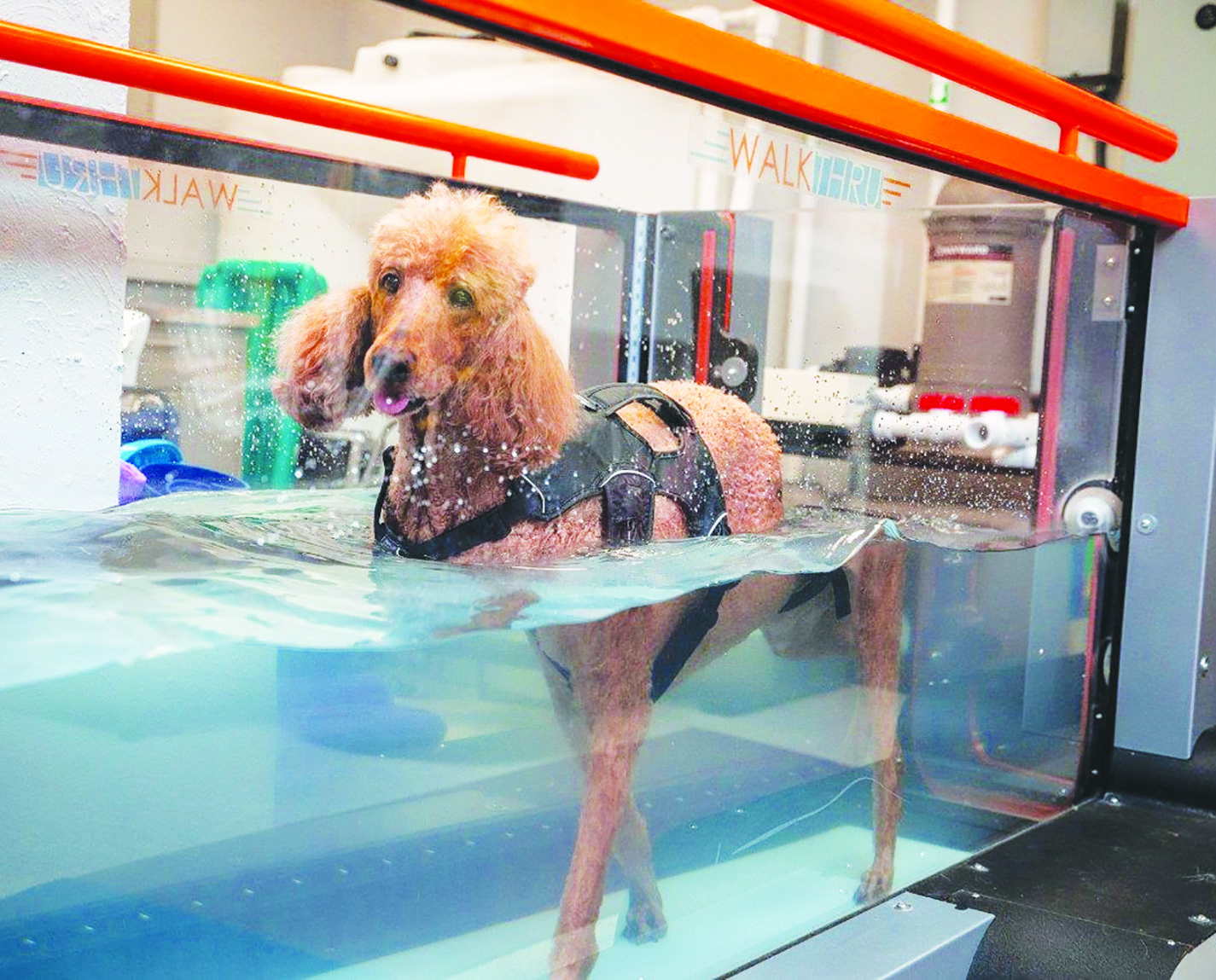
Like most older dogs, Tootsie the standard poodle has arthritis that slows her down a little — but in early 2023, Tootsie began to trip and fall. Her owner, Mary Jane Barrett of Roanoke, described it as a “belly flop” as Tootsie’s legs stopped working.
Tootsie’s primary veterinarian determined that the problem was neurological and referred her to the Veterinary Teaching Hospital at the Virginia-Maryland College of Veterinary Medicine. Tootsie arrived at her appointment the next day unable to stand up and had to be brought in on a gurney.
The specialists at the teaching hospital realized that Tootsie had a problem with her cervical spine, and after an MRI, they determined that she had a condition called cervical spondylomyelopathy, also known as wobbler syndrome.
Wobbler syndrome is typically seen in large breed dogs, and it occurs when the spinal cord is compressed because of a narrowing of the spinal canal. In Tootsie’s case, a disc protrusion was bulging between her vertebrae, interfering with the normal function of her spinal cord. Treatment for wobbler syndrome ranges from rest and pain management to surgery to decompress the spinal cord.
“It’s scary. We were petrified to make the decision: surgery or medicine,” Barrett said.
Because her symptoms occurred so quickly, surgery was the best option.
It took Tootsie six days to raise her head after surgery — recovery is long and often difficult.
“Going into surgery, we discussed that it could take months for her to get back up and walk again,” said Kayla Fowler, chief neurology and neurosurgery resident.
But with treatment, physical therapy, and the support of her owner and the college community, Tootsie is exceeding expectations.
Certified canine rehabilitation practitioner Flori Bliss began to notice a difference within two to three days of working with Tootsie. By week two, Tootsie could lay on her side and lift her paw to shake hands.
Bliss incorporated laser therapy, massage, and manual therapy to get Tootsie’s muscles prepared to walk. Through physical therapy exercises, Tootsie learned to sit up, stand up, and eventually walk by herself again.
“She has had cheerleaders on her side through and through. Some days have been harder than others, but it’s been great to encourage her and say ‘Come on, Tootsie, you got it,’” said Kimberly Winck, a veterinary assistant in the neurology department.
Winck captured videos of Tootsie’s physical therapy exercises so everyone could see Tootsie’s progress.
“We had her doing rehab through the halls of the school, and it wasn’t just us cheering her on in the hallway. People from the pharmacy were leaning out, people from the diagnostics lab were leaning out, checking in on how she’s doing. She’s famous,” Fowler said.
“Tootsie is very motivated by positive praise, not just food, and so having all those people around her cheering her on was her motivation — and having mom come. Mary came every day to help with her rehab. It’s heartwarming to see that much dedication with an owner to come that often,” said Bliss.
Tootsie has made a lot of progress since her surgery, and the Barretts have put in the work to make sure Tootsie is happy and healthy.
“In a case like this, there has to be a lot of committed people. Her doctor even said ‘You could go on vacation and I’ll keep her. If your dog sitter can’t do it, I’ll keep her for you.’ That’s one type of commitment, but the other commitment has to be the owners. It’s a lot of commitment to get her up, roll her over every so many hours, get her food, make sure she eats, carry her out to potty, do exercises, and scratch her ears,” said Barrett.
After staying at the teaching hospital for weeks, Tootsie was able to go home on weekends, and then finally she was able to go home for good. Tootsie is back home and ramins in long-term rehab. She still wears a support harness in case she needs help.
“There have been lots of tears. The first day that she just got up on her own and walked to her water bowl, I cried. Watching her walk from the car to therapy has just fulfilled every kind of emotion,” said Barrett. “My daughter said it best: ‘Mom, it’s like watching your kid take their first step.’
Andrew Mann for Virginia Tech


